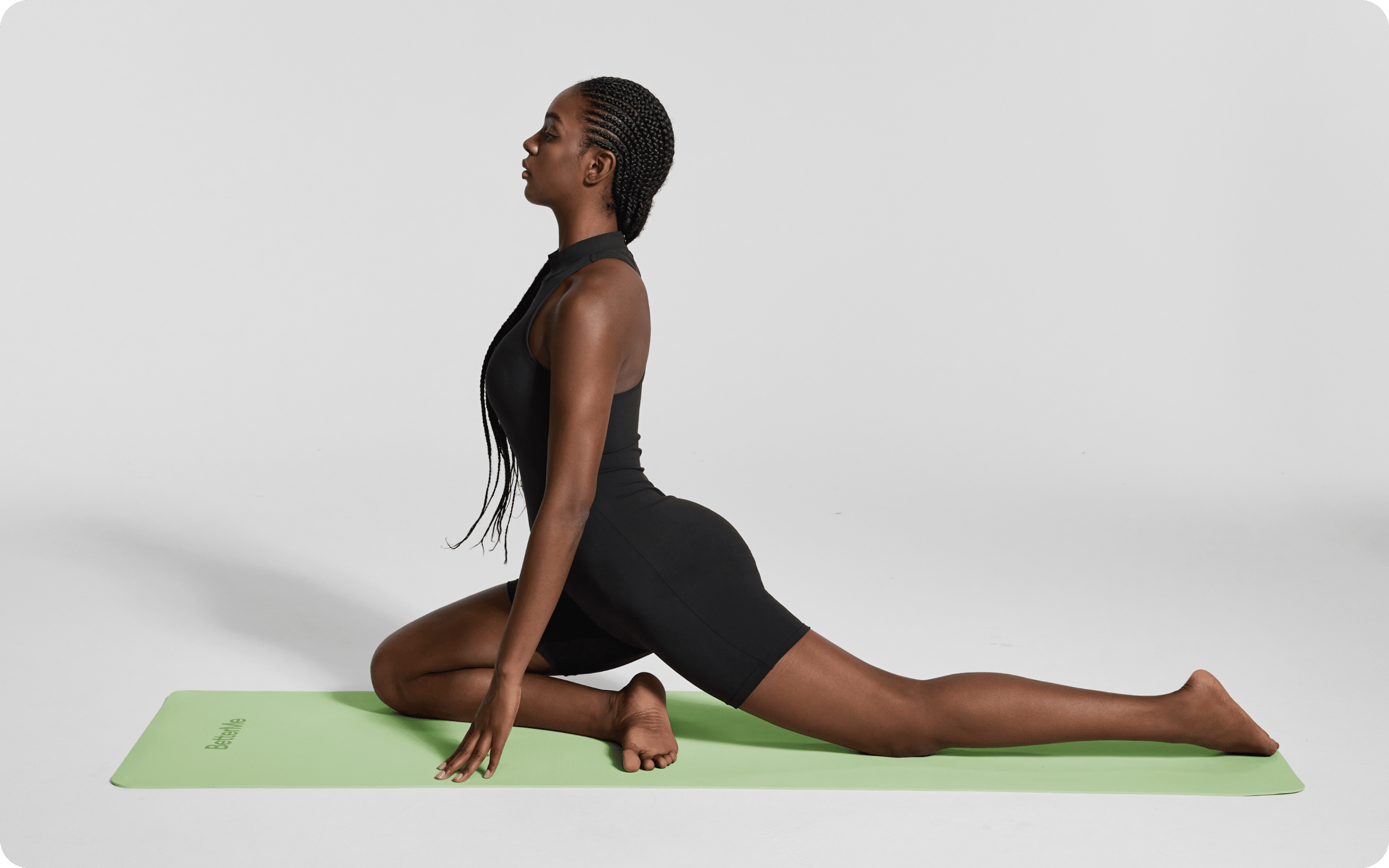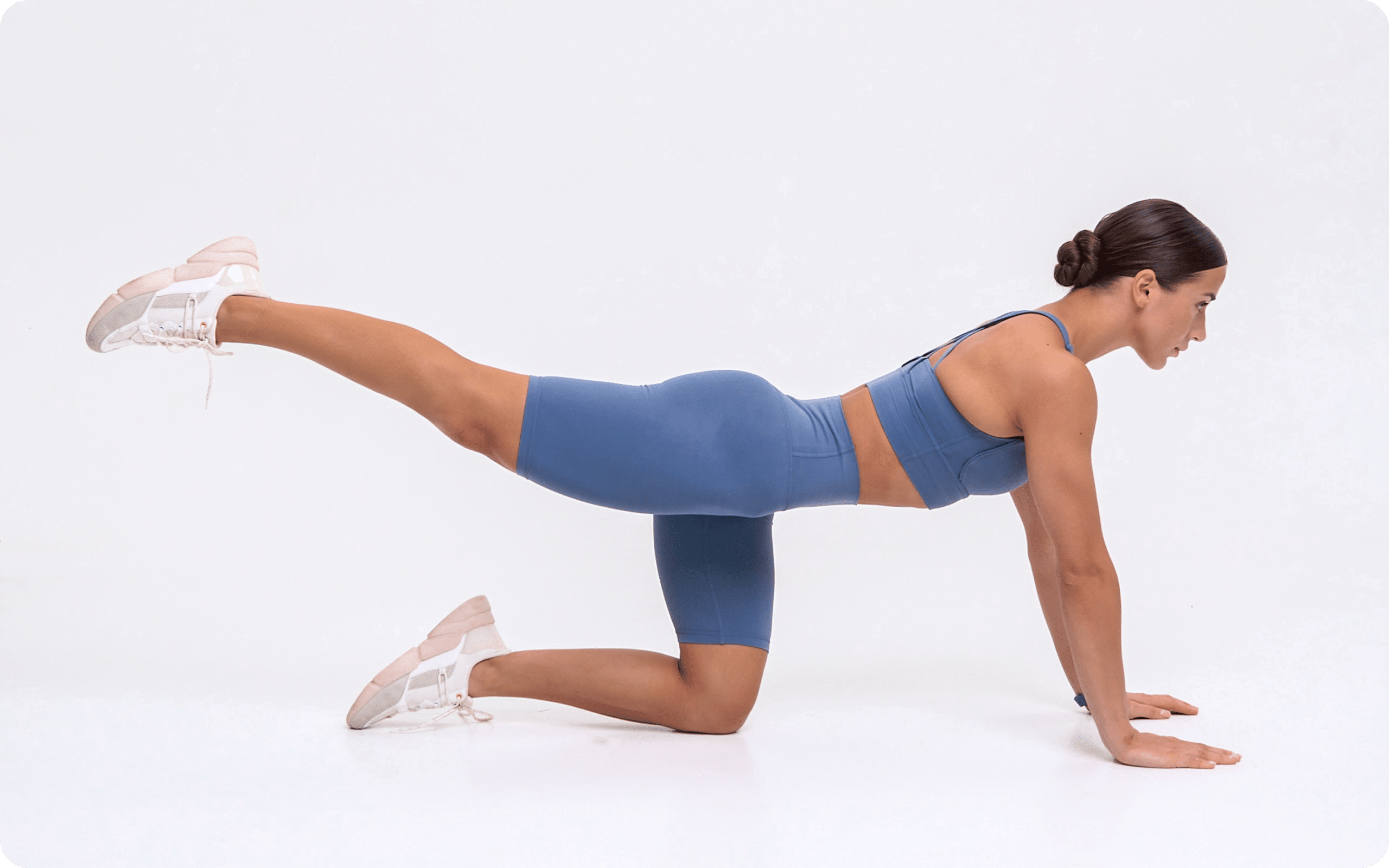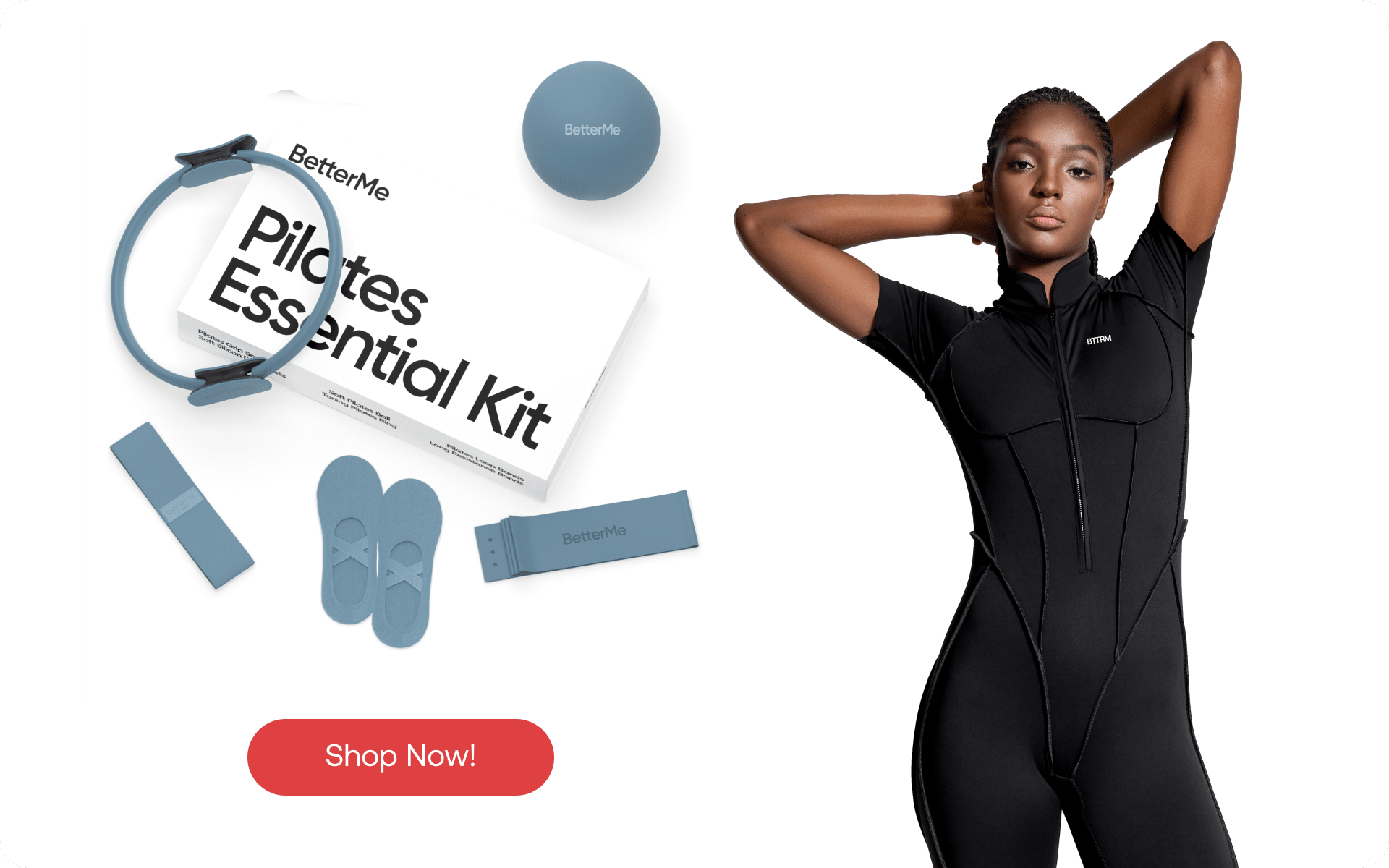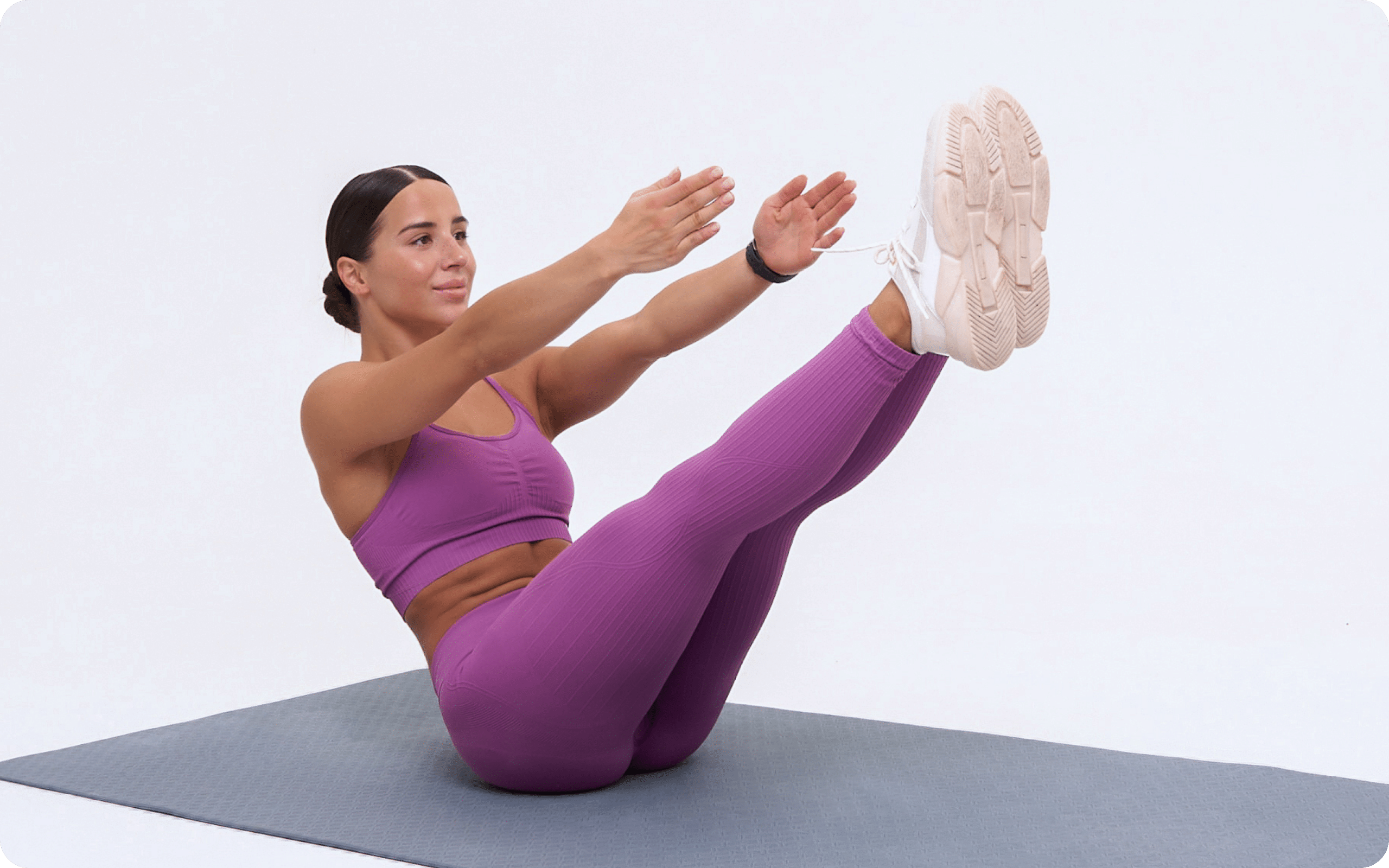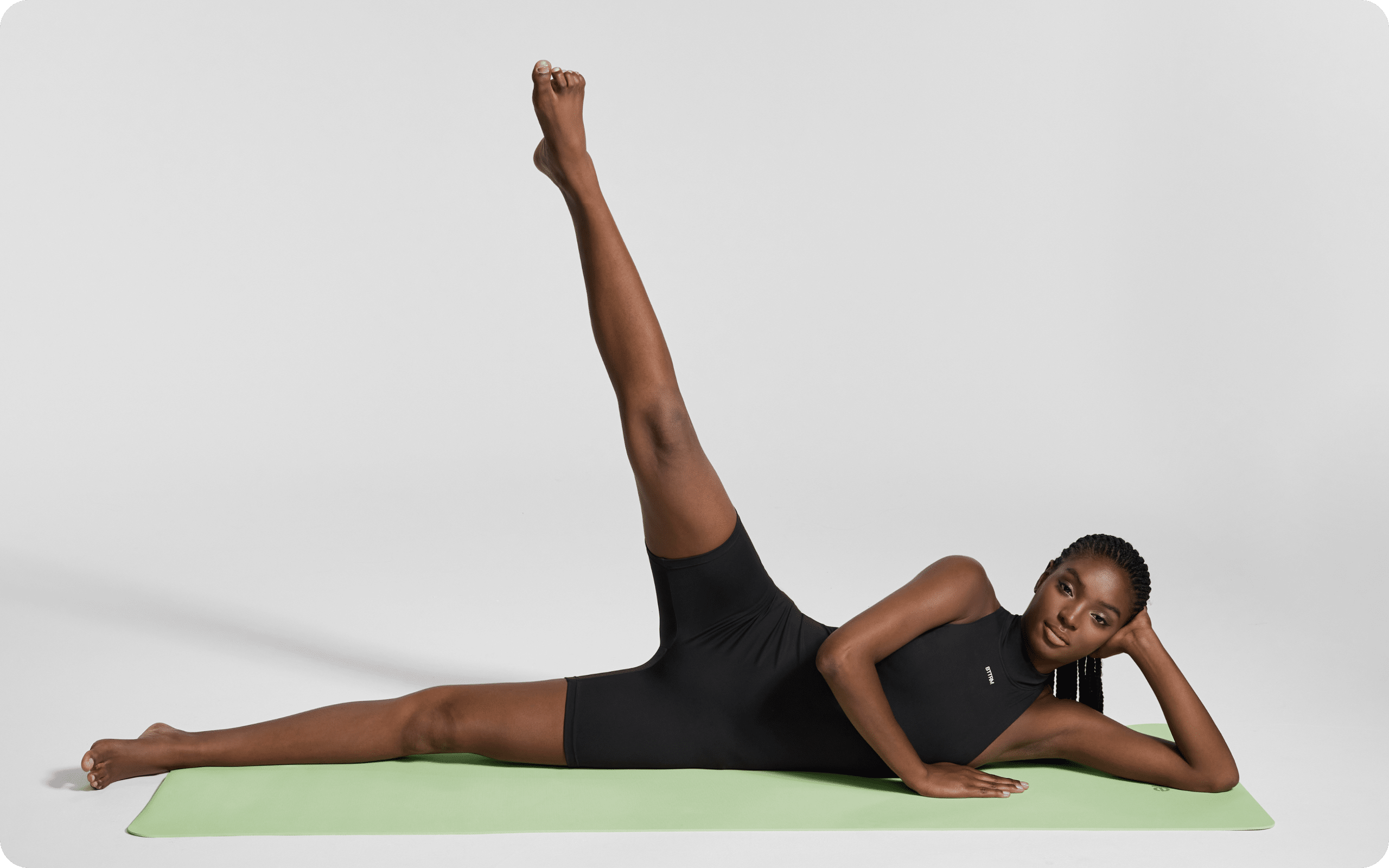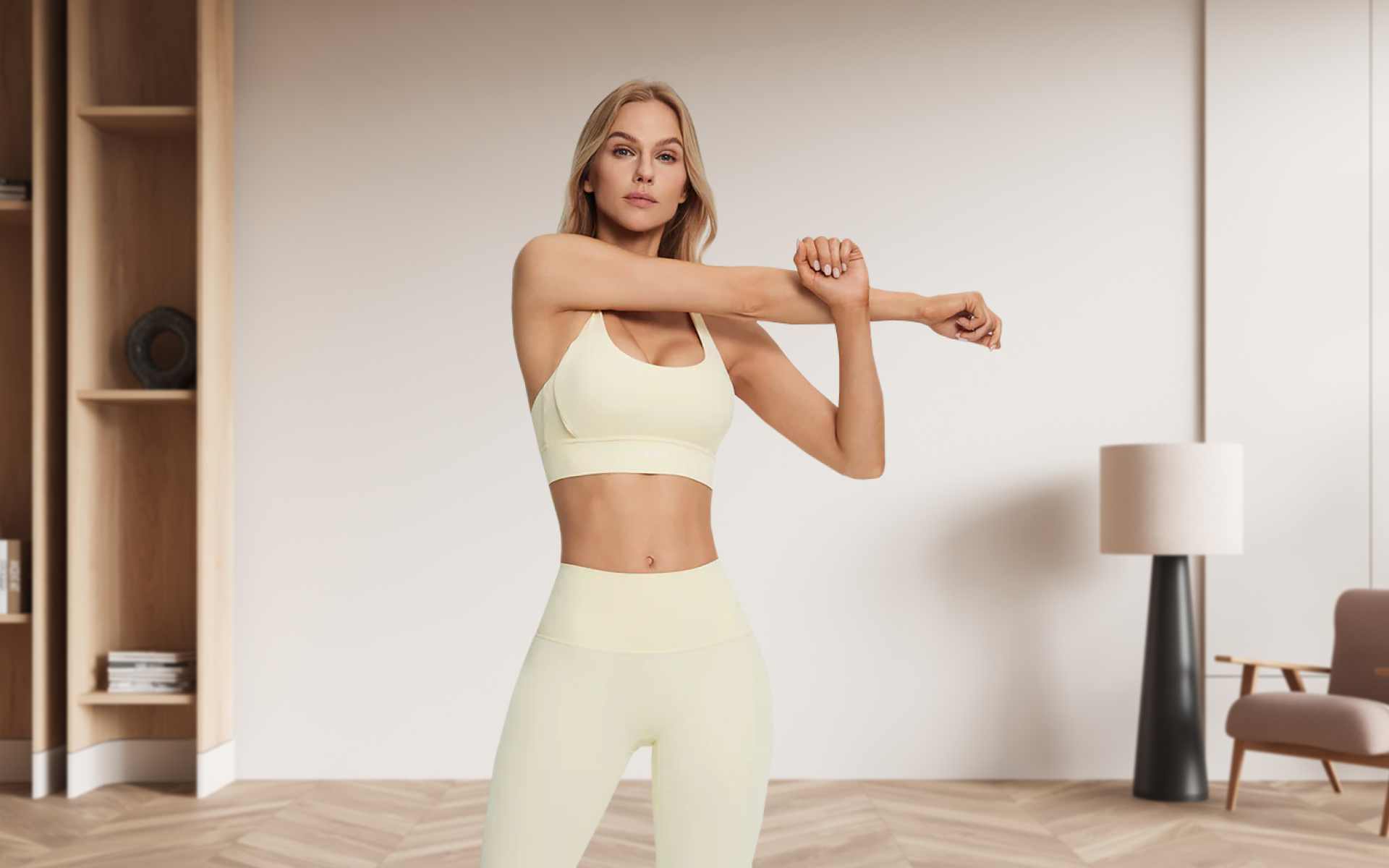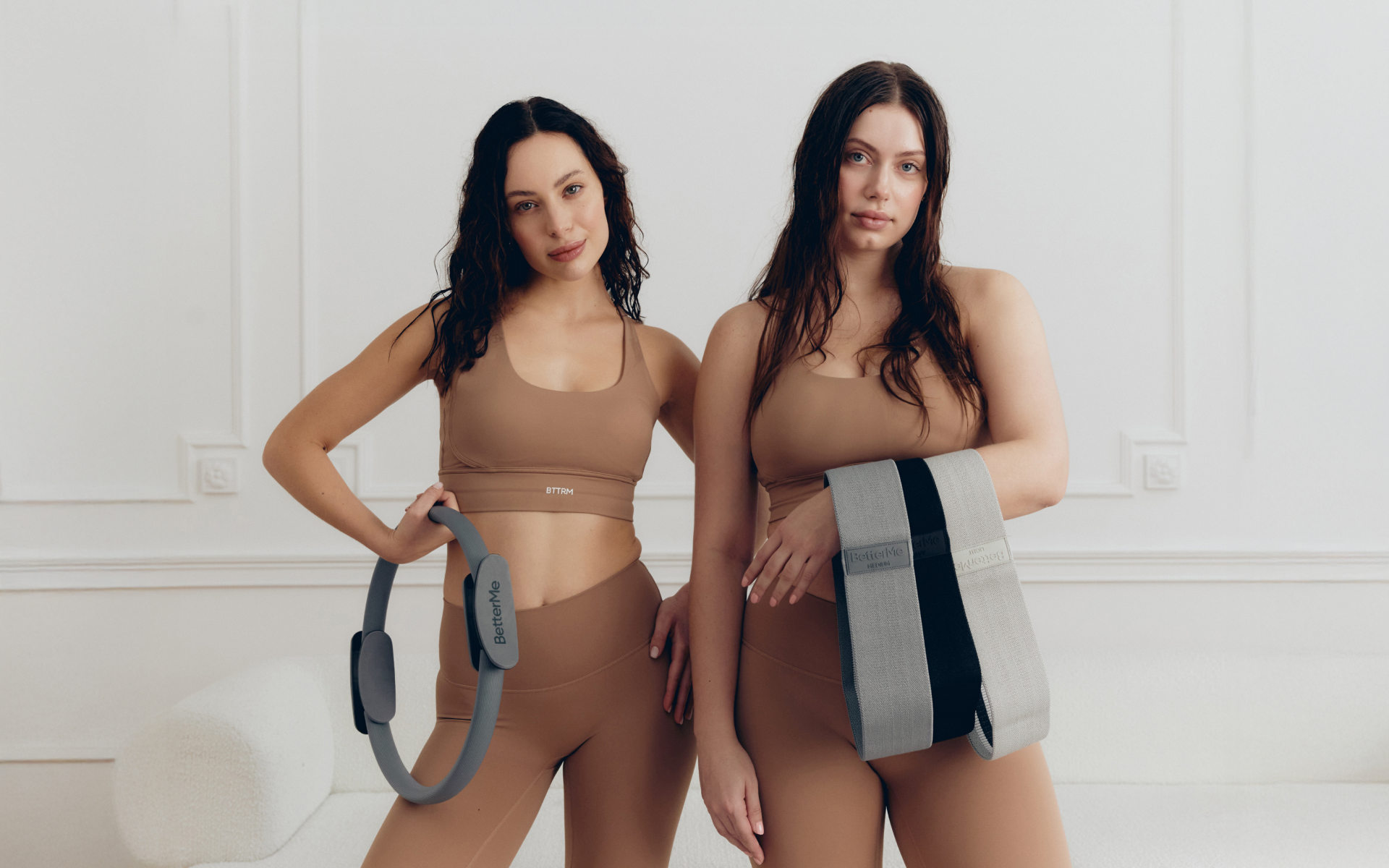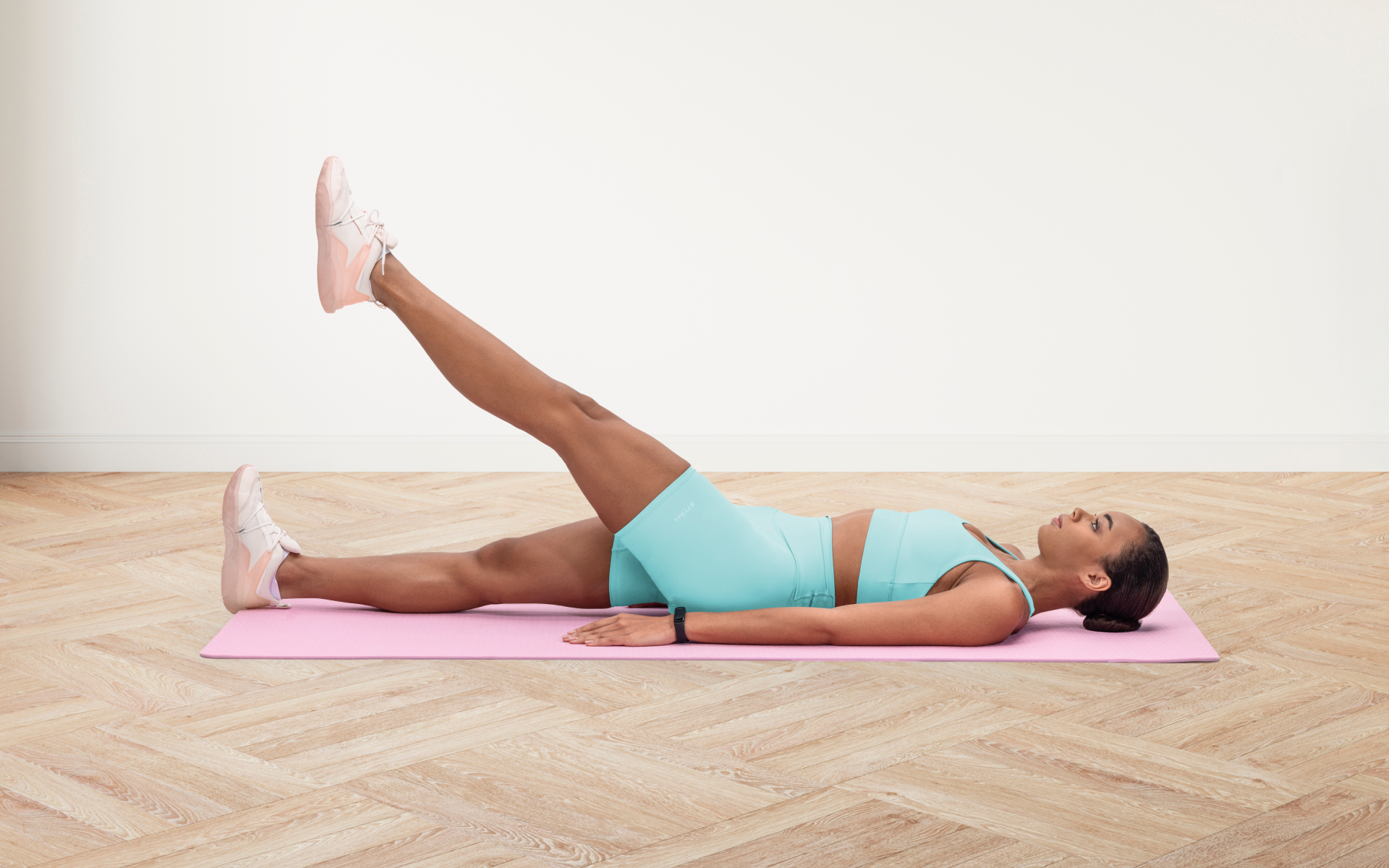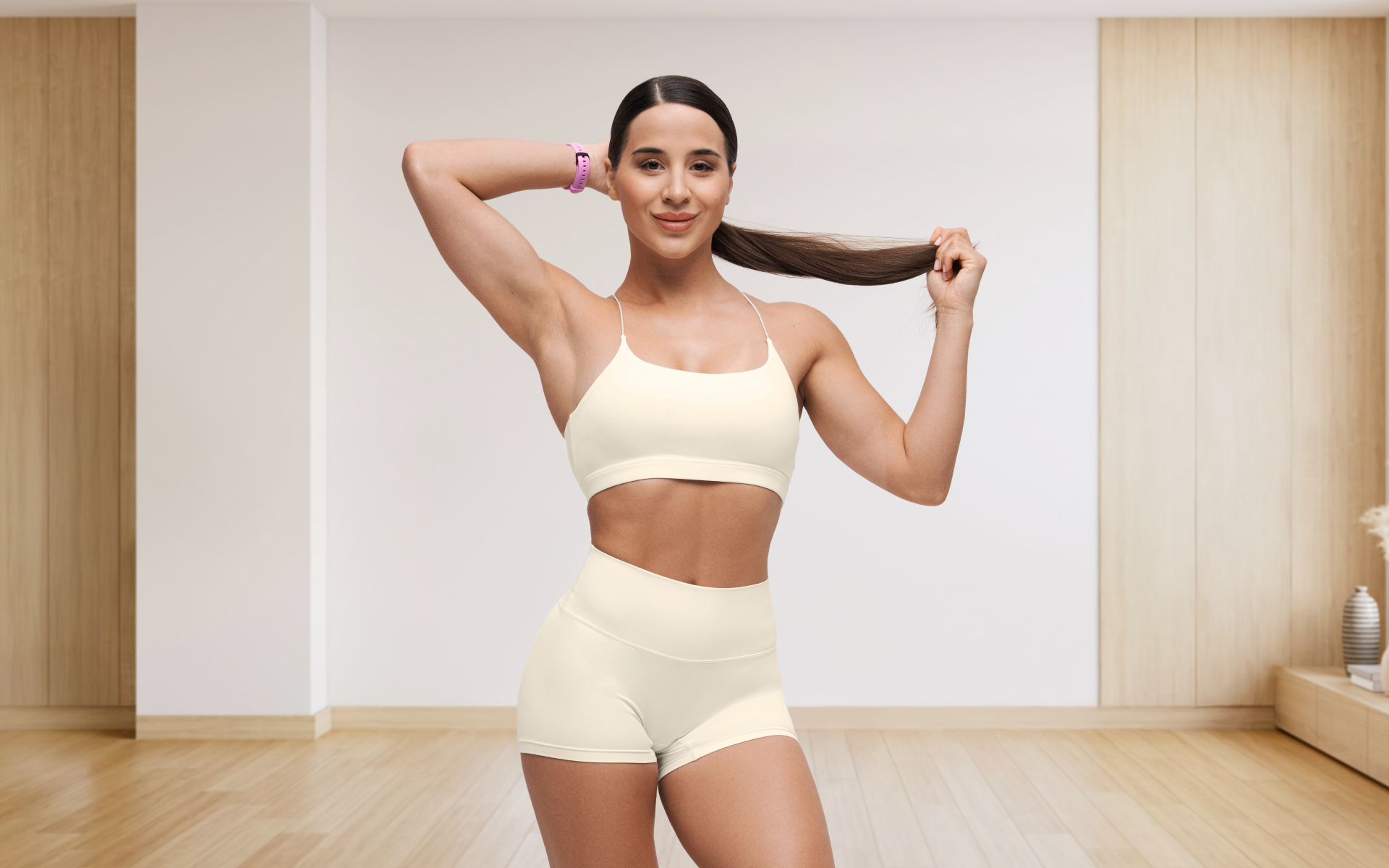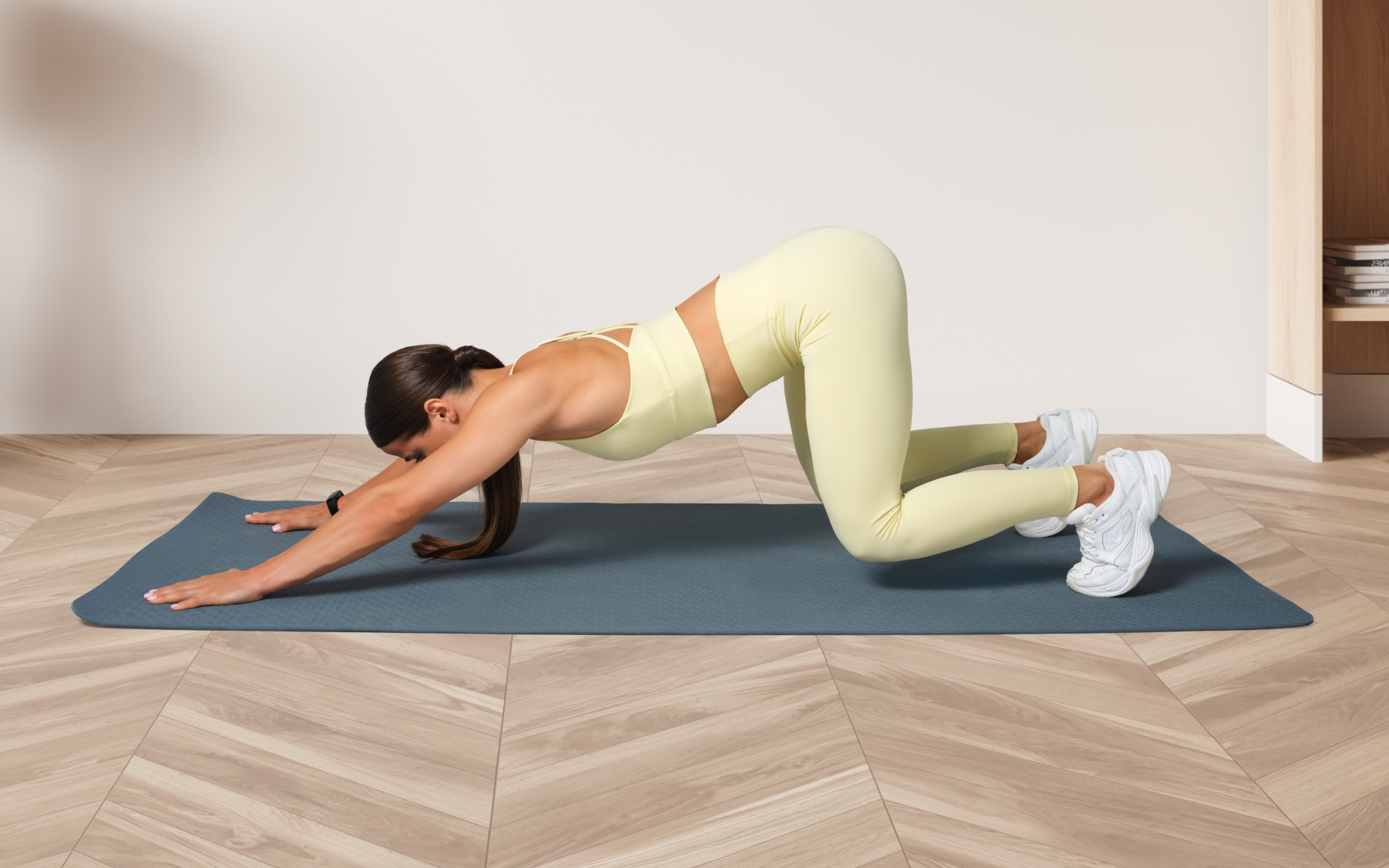What might be your reason for entering the Pilates routine? The inner desire to become stronger and more flexible, perhaps you decided to use Pilates as part of gentle strength training for rehabilitation, or you could simply yearn to perk yourself up with invigorating movements.
It could be that all the above reasons resonate with you. That’s even better. The interest in Pilates usually lies in the versatility of its techniques. You may be a Pilates beginner or an experienced practitioner, but no matter what, Pilates adjusts to all fitness levels.
Pilates is an excellent system of repetitive exercises, aiming to strengthen your body through muscular effort that stems from your core. This activity cultivates awareness of the body to support everyday movements gracefully and efficiently.
Today you will explore 9 basic Pilates movements you can do at home.
If you slouch or suffer from constant back pain because of a sedentary job, you should consider Pilates. The following full-body pilates for beginners may help improve your posture and enhance your balance. Surely, talking to your doctor first is the right idea.
It’s always vital to stick to the proper form and technique in order to reap the potential benefits without harming your body.
If you prioritize cozy home workouts, Pilates is a great choice. Grab a yoga mat, put on your leggings and get to it.
What are the most basic Pilates moves?
Pilates moves for beginners with no equipment are easy to navigate and bring out the fun side as well. Before getting to the 9 basic Pilates exercises, let’s clear something up.
Be sure to understand your reasons for starting a Pilates workout routine. Why? Identified reasons help you take the exercises much more seriously and increase your chances to turn it into a habit.
BetterMe is your fast-track ticket to a long-lasting weight loss! Tailor your fitness journey and maximize your results with just a couple of swipes!
Even though Pilates uses a combination of around 50 simple, repetitive exercises to create muscular exertion (2), we’re going to go through the 9 beginner-friendly ones.
Exercise #1 Roll-Up
How to perform:
- Get in a seated position on the floor with your legs straight in front of you.
- Extend your arms over your legs and lower your head between your arms.
- Curl backward, bend your knees, and stop halfway down. Then lift your arms straight up and pull your abs in tightly.
- Exhale and lower your arms while curling back up.
- Do 6-8 reps at a moderate pace. As you become more advanced, try lowering to the floor (3).
Exercise #2 Shoulder Bridge
How to perform:
- Lie on your back, bend your knees, and keep your feet at hip-width apart.
- Put your arms at your sides and raise your hips without arching your back.
- Engage the muscles of your buttocks and hamstrings, lift your hips, and hold for five breaths.
- Lower down to the floor (3).
Exercise #3 Shoulder Bridge 2
How to perform:
- Get in the shoulder bridge pose.
- Keeping your hips raised, bring one knee up in the air with toes pointed.
- Exhale as you flex the leg up and inhale as you put it down.
- Maintain a strong torso and your other foot firmly on the mat. Do five reps with each leg (3).
Exercise#4 Upper Back Letter T
How to perform:
- Lie face down on a mat with your feet together.
- Slightly raise your head,chest, and feet, and extend your arms out from your sides, palms down.
- Exhale and sweep the arms back as you lift your chest and your chin higher.
- With your waist on the mat and your upper back muscles bring your arms closer to your body.
- Return to starting position. Do five reps (3).
Exercise #5 Kneeling Side Kicks
How to perform:
- Kneel on both knees.
- Lean to the right, place your right hand on the mat under the shoulder, and your left hand behind the head.
- Raise your left leg until it is parallel to the floor.
- Maintaining a steady torso, kick the leg to the front and then to the back, knee straight.
- Do five reps on each side (3).
Exercise #6 Leg Swings
How to perform:
- Stand with crossed arms in front of you at shoulder height.
- Engaging your abs, exhale and lift your left knee toward the left elbow.
- Lower the leg and repeat for more reps.
- Complete a total of 10 swings with each leg (3).
Exercise #7 Wall Chair
How to perform:
- Lean your back against the wall and feet hip-width apart.
- Walk your feet out a little, keep your knees bent, and slide down as if sitting in a chair.
- Raise the arms to shoulder height and hold for 30 seconds. Do two reps (3).
Exercise #8 Standing Jumps
How to perform:
- Stand, pull in your belly, and place your arms overhead.
- Inhale and lower your head, bending your knees and swinging your arms back.
- Exhale and jump up with straight legs, reaching the arms overhead.
- Land softly with slightly bent knees and return quickly to the starting position.
- Do 8-10 reps at a rapid pace.
- Ensure you’re out of breath when you finish the exercise (3).
Exercise #9 Mermaid
How to perform:
- Sit cross-legged and place your arms at your sides.
- Inhale, reach your right hand over your head, and lean your torso to the left until you feel a stretch in your right side.
- Inhale deeply, then exhale.
- Inhale as you come back to the original position.
- Do five reps on each side.
Implementing beginner Pilates moves at home may be a tad tough for those who haven’t been physically active for a while. Yet, it shouldn’t stop you from reaching your fitness goals.
Pilates Exercises For Beginners and advanced practitioners are vital for improving muscle tone, which results in better stability and endurance. It’s not going to bulk you up. Yet, it’s designed to cultivate a leaner physique (1).
What is the first move in Pilates?
The first Pilates exercise is called the “Hundred”. This awesome exercise will warm you and your body up and get your blood pumping.
The technique of the Hundred looks like this:
- Lie on the mat, bend your knees into your chest, and lift your head and shoulders off the mat.
- Extend your legs out diagonally and reach your arms long by your side with palms facing down.
- Lift your arms up and down no higher than your hips. As you pump your arms, inhale for 5 counts and exhale for 5 counts to complete one set.
You should perform this exercise 10 times with 5 inhales and 5 exhales, equaling 100. If you’re a beginner, keep your legs bent on the mat. Advanced students may extend their legs or lower them keeping them as close to the mat as possible without letting them rest.
Read more: Wall Pilates for Butt: A Quick Guide for Beginners
How many times a week should a beginner do Pilates?
Beginners should practice Pilates for three days a week. On average, one Pilates session lasts for at least 20 minutes. Yet, you may extend the time or narrow it down depending on how your body feels.
Being a relatively Low-Impact Workout Pilates perfectly challenges your stability, focuses on controlling your breath, and promotes your mental health (1).
Be aware of starting it cautiously. Before making Pilates a part of your life:
- Talk to your doctor. Pilates is a great choice for people with different medical conditions, but you may need to adjust your practice slightly, depending on your condition. It’s highly recommended to talk to your doctor if you’re injured or recovering from surgery.
- Use the services of a qualified instructor. It doesn’t matter whether you’re practicing Pilates at home via live video instruction or attending live classes, you really should be guided by a pro. Ensure the instructor is a member of a professional organization and flick through the reviews on the Internet. You need to seek an instructor with advanced training if you’re doing Pilates to address a specific health concern.
- Do a 5-10 minute warm-up. Preparing your body for Pilates is crucial. A generous warm-up increases the temperature, blood circulation and flexibility of your muscles. It also helps you do your workouts more safely. A warm-up before moderate anaerobic activity promotes a gradual increase in heart rate and breathing before the activity (4).
- Don’t rush and focus on the technique. People engaging in vigorous cardio workouts or high-intensity workouts feel so powerful that instead of starting slow, they rush to more challenging Pilates movements in their first class. Don’t rush anywhere and start your Pilates practice slow and easy, working your way up to higher difficulty levels. Your body is starting to train to move differently, therefore, picking up the pace too suddenly may harm you (1).
Is 30 minutes of Pilates a day enough?
Doing 30 minutes of Pilates is a sufficient amount. Pilates was designed to be safe to do daily. However, beginners should engage in Pilates movements for two or three times a week maximum.
As you get stronger, your Pilates sessions may extend to 40-50 minutes. Remember this: time doesn’t matter as much as your technique and form. Lacking technique and form puts yourself at risk of getting injured.
If you’ve mustered up the courage to crush your weight loss goal, let Betterme take the sting out of this demanding process. Our app will help you restructure your habits, remold your life and crank up your fitness results!
FAQs
Can a beginner do Pilates everyday?
No, it’s not recommended for beginners to do Pilates daily. Practicing Pilates for 20-30 minutes twice or thrice per week is sufficient. As you get the hang of the movements and become stronger, you can easily engage in Pilates techniques more days per week being sure to leave 1-2 days for rest.
Is Pilates 3 times a week enough exercise?
It depends on your overall goals. Doing Pilates three times a week is enough if you aim to improve your strength, flexibility and posture. Yet, if your goals apply to losing weight, you should implement additional workouts with higher intensity, sleep well, eat better food, and stay hydrated.
Is it better to do Pilates in the morning or at night?
The best time for you to practice Pilates is when it fits best in your schedule. When we plan workouts into our routine, we are more likely to make it a continuous habit. There are no benefits specific to morning or evening exercise. Starting your day with Pilates can be a great way to prepare your body for your day, while ending your day with Pilates can be a great way to wind down and relieve stress. Do what works best for you.
The Bottom Line
Pilates is an excellent system of repetitive exercises aiming to strengthen your body through muscular effort that stems from your core.
Both beginners and advanced practitioners can enjoy a Pilates routine. We have disclosed the top-notch 9 basic Pilates moves you can do at home today. Before starting Pilates, contact your doctor, choose a professional online or offline instructor and most importantly begin your practice at a slow pace.
Pilates is a good way to strengthen your core, promote flexibility, and improve your posture. Doing Pilates daily is not recommended for beginners. As a beginner, twice or three times per week will be enough for you. Later, you may upgrade to daily movements.
DISCLAIMER:
This article is intended for general informational purposes only and does not serve to address individual circumstances. It is not a substitute for professional advice or help and should not be relied on for making any kind of decision-making. Any action taken as a direct or indirect result of the information in this article is entirely at your own risk and is your sole responsibility.
BetterMe, its content staff, and its medical advisors accept no responsibility for inaccuracies, errors, misstatements, inconsistencies, or omissions and specifically disclaim any liability, loss or risk, personal, professional or otherwise, which may be incurred as a consequence, directly or indirectly, of the use and/or application of any content.
You should always seek the advice of your physician or other qualified health provider with any questions you may have regarding a medical condition or your specific situation. Never disregard professional medical advice or delay seeking it because of BetterMe content. If you suspect or think you may have a medical emergency, call your doctor.
SOURCES:
- Pilates 101: What It Is and Health Benefits (2023, clevelandclinic.org)
- Pilates: how does it work and who needs it? (2011, ncbi.nlm.nih.gov)
- Slideshow: 15 Pilates Moves That Get Results (2022, webmd.com)
- Warm Up, Cool Down (2024, heart.org)
